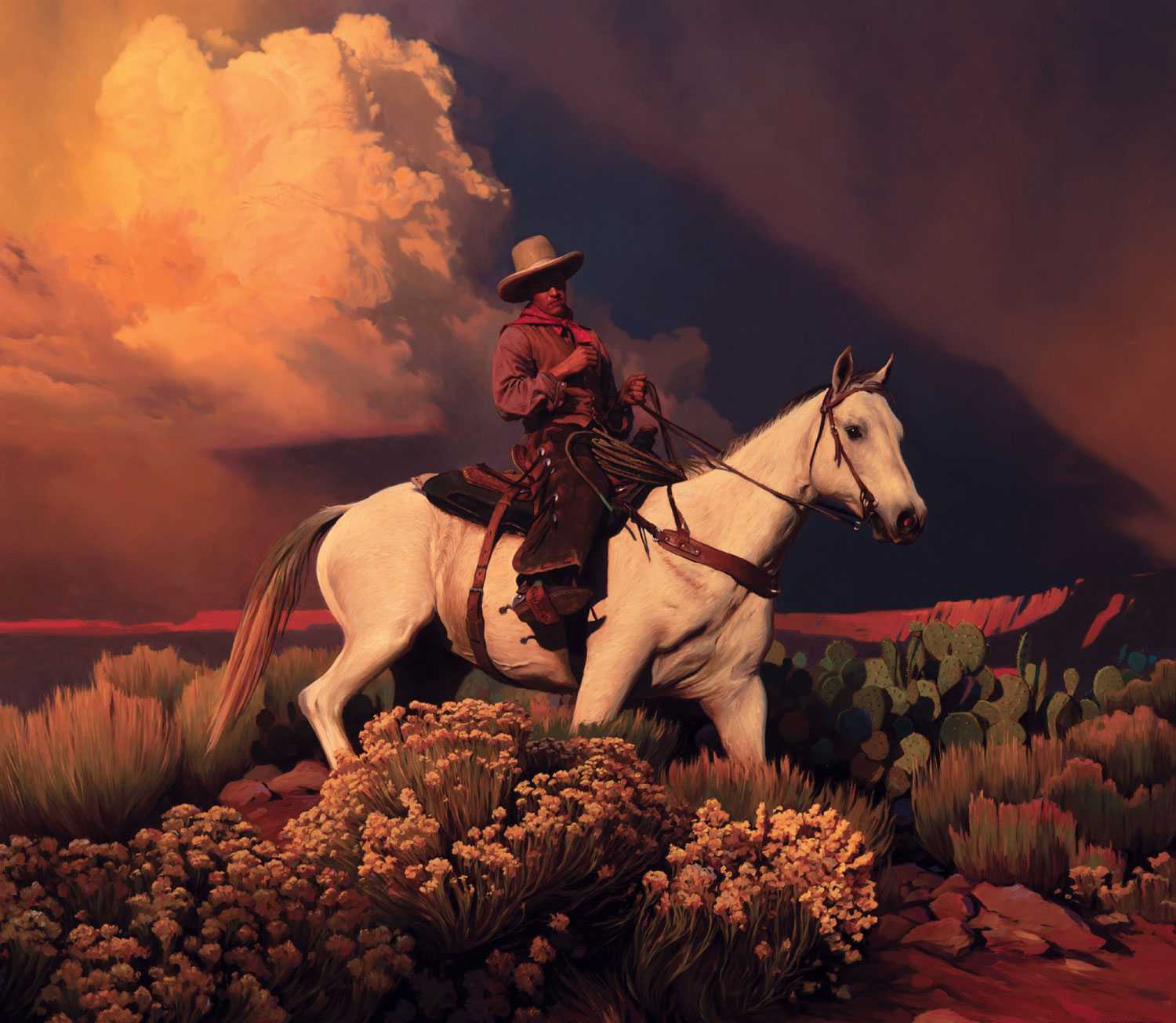Table of Contents
- Exploring the Evolution of Western Art Through the Ages
- The Influence of Cultural Movements on Artistic Expression
- Navigating Iconic Techniques and Styles in Western Masterpieces
- Essential Tips for Collecting and Appreciating Western Art
- Q&A
- Closing Remarks


Exploring the Evolution of Western Art Through the Ages
The journey of Western art is a fascinating tapestry woven with moments of brilliance, profound expression, and cultural evolution. From the iconic cave paintings of prehistoric times to the striking contemporary installations of today, each era reflects the values, beliefs, and experiences of its people. This ongoing transformation invites us to explore the motifs, techniques, and inspirations that defined each phase, showing how artistry is both a personal and communal endeavor.
The Renaissance, heralded as a bridge between the medieval and modern worlds, marked a resurgence of classical learning and symmetry, with artists like Leonardo da Vinci and Michelangelo leading the charge. Their works, characterized by a sophisticated understanding of human anatomy and proportion, helped propel art into a new realm where the realistic representation of the human figure became paramount. This era also saw the rise of perspective, allowing artists to create depth in their works, fundamentally changing the viewer’s experience.
As time progressed, the Baroque period introduced an exuberance and emotional intensity that marked a departure from earlier styles. Artists such as Caravaggio and Rembrandt employed dramatic lighting, movement, and rich color palettes to evoke strong emotional responses. This period was also defined by its grandeur, as seen in the opulent churches and palaces adorned with detailed frescoes and sculpture, designed to inspire awe and reverence. In contrast, the Impressionist movement of the late 19th century sought to capture fleeting moments by emphasizing color and light over detail. Pioneers like Claude Monet and Edgar Degas broke tradition by painting en plein air, creating works that reflected their observations of nature and modern life.
In the 20th century, art continued to evolve dramatically with movements such as Cubism, Surrealism, and Abstract Expressionism. Artists like Pablo Picasso challenged perceptions of form and subject, whereas others like Salvador Dalí infused dreamlike quality into their works. This era represented a complete departure from representational art, as creators explored the psychological and emotional landscape through abstraction. The postmodern age further blurred the lines, incorporating mixed media and technology, revealing an art scene that is as diverse and fragmented as society itself.


The Influence of Cultural Movements on Artistic Expression
The intricate relationship between cultural movements and artistic expression has profoundly shaped the landscape of Western art throughout history. Each period has been marked by significant social, political, and philosophical changes that not only influenced artists but also dictated the themes, styles, and methodologies they employed. During the Renaissance, for instance, the revival of classical ideas sparked a monumental shift toward realism and humanism, showcasing the importance of individual experience and emotion in art.
As various ideologies emerged, so too did the mediums through which artists expressed their reflections on contemporary society. The Baroque era, characterized by its ornate and dramatic style, arose partly in response to the Counter-Reformation, highlighting a theatrical flair that captivated audiences and emphasized religious fervor. In contrast, the Enlightenment promoted rational thought, leading to Neoclassicism, which celebrated simplicity and the virtues of ancient Greece and Rome.
The 19th century brought a rich tapestry of movements such as Romanticism, Impressionism, and later, Post-Impressionism, as artists reacted against the constraints of academic norms. Romanticism emphasized emotion and the sublime in nature, while Impressionists like Monet and Renoir broke conventions to capture fleeting moments and changes in light. This shift towards subjective experiences paved the way for modern art movements, encouraging more personal interpretations and experimentation.
| Art Movement | Key Characteristics | Influential Artists |
|---|---|---|
| Renaissance |
|
Leonardo da Vinci, Michelangelo |
| Baroque |
|
Caravaggio, Rembrandt |
| Romanticism |
|
Delacroix, Turner |
| Impressionism |
|
Monet, Renoir |
Through these cultural movements, Western art has not only served as a reflection of the times but has also played a critical role in shaping societal ideals. Whether it is the exploration of the human condition during the Renaissance, the emotional depth of the Baroque period, or the fluidity and immediacy in Impressionism, each era contributes to a rich narrative of artistic endeavor that continues to evolve. The interplay between culture and art remains vibrant, making it essential to appreciate these historical contexts to fully grasp the complexities of contemporary artistic expression.
Navigating Iconic Techniques and Styles in Western Masterpieces
Western art has long been characterized by its distinctive techniques and styles that have evolved over centuries, reflecting a rich tapestry of cultural influences and historical contexts. One of the most notable techniques is chiaroscuro, which utilizes strong contrasts between light and shadow to create a sense of volume and depth. Artists like Caravaggio and Rembrandt mastered this technique, bringing drama and emotion to their subjects. Another essential method is sfumato, famously used by Leonardo da Vinci, where colors and tones blend seamlessly, resulting in soft transitions and a lifelike quality.
The evolution of styles can also be traced through various movements, each marked by its stylistic innovations and philosophical underpinnings. The Renaissance, for instance, heralded a revival of classical ideas and an unprecedented focus on humanism. This period was followed by the exuberant expression of Baroque art, which embraced movement, vivid detail, and emotional intensity. As the art world progressed, the Impressionist movement emerged, emphasizing the effects of light and color, allowing artists like Monet and Renoir to capture fleeting moments in everyday life.
Exploring the range of artistic expressions reveals the significant impact of geographical and cultural shifts. For example, the famous Dutch painters developed unique approaches to landscape and still life that contrasted sharply with their Italian counterparts. In an era where gender roles were rigidly defined, artists like Artemisia Gentileschi broke barriers, using their work to communicate personal and social issues, thus marking the rise of feminist perspectives in art.
The table below highlights significant Western art movements, their defining characteristics, and representative artists:
| Movement | Characteristics | Notable Artists |
|---|---|---|
| Renaissance | Realism, humanism, classical themes | Leonardo da Vinci, Michelangelo |
| Baroque | Dramatic use of light, movement, intense emotions | Caravaggio, Rembrandt |
| Impressionism | Focus on light, color, and everyday scenes | Monet, Renoir |
| Modernism | Experimentation, abstraction, individuality | Pablo Picasso, Georgia O’Keeffe |


Essential Tips for Collecting and Appreciating Western Art
Collecting Western art is an exciting journey that goes beyond mere acquisition; it’s about immersing yourself in the history and culture that these pieces represent. To start your collection, it’s important to research the artists and movements that resonate with you. Familiarize yourself with key figures, such as Edward Hopper or Georgia O’Keeffe, and understand the significance of different styles, from the bold strokes of Abstract Expressionism to the serene landscapes of Impressionism.
When visiting galleries or art fairs, take advantage of the opportunity to engage with gallery owners and artists. Ask questions about the pieces, their creation process, and the stories behind them. This interaction can provide you valuable insights and help deepen your appreciation for the art. Additionally, consider joining art organizations or clubs that focus on Western art. Networking with fellow enthusiasts can lead to valuable exchanges of knowledge and experiences.
If you are purchasing art, consider the concept of provenance—this refers to the history of ownership of the piece. Understanding provenance can greatly enhance your appreciation, as it can reveal the significance of the artwork within the broader context of art history. Look for documentation verifying the piece’s authenticity, as well as its past exhibitions. You may also want to explore purchasing art from auction houses, which can sometimes offer surprising gem pieces that fit your budget.
| Tip | Description |
|---|---|
| Start Small | Begin with prints or smaller works that you love. |
| Seek Out Emerging Artists | Explore options at local art fairs or recent exhibitions. |
| Consider Themes | Collect art that reflects a personal story or journey. |
| Maintain Your Collection | Care for your pieces properly to preserve their value and beauty. |
Q&A
Q&A: Exploring Western Art
What is Western Art?
Q: How would you define Western art? A: Western art encompasses a broad spectrum of artistic styles, movements, and philosophies that originated in Europe and later spread to the Americas and other parts of the world. It includes various forms, such as painting, sculpture, and architecture, reflecting cultural shifts from the ancient Greeks and Romans through the Renaissance, Baroque, and Modern eras.What are the major movements in Western Art?
Q: What are some key movements in Western art history? A: Western art has seen numerous influential movements, including:- Renaissance (14th-17th centuries): Characterized by a revival of classical learning and emphasis on humanism. Notable artists include Leonardo da Vinci and Michelangelo.
- Baroque (17th-18th centuries): Known for dramatic use of light and shadow, emotion, and grandeur, as seen in the works of Caravaggio and Rembrandt.
- Impressionism (late 19th century): Focused on capturing fleeting moments and the play of light, with artists like Claude Monet and Pierre-Auguste Renoir at the forefront.
- Modernism (20th century): A departure from traditional forms, embracing abstract and experimental techniques, pioneered by artists such as Pablo Picasso and Wassily Kandinsky.
How has Western Art been influenced by culture and society?
Q: In what ways has culture impacted Western art? A: Culture has played a significant role in shaping Western art. Social, political, and religious contexts often influence artistic themes and styles. For instance, the Renaissance was driven by a resurgence in classical antiquity, while the tumultuous events of the 20th century, such as wars and globalization, prompted artists to explore new forms and messages within their work.Who are some of the most influential Western artists?
Q: Can you name a few influential artists from Western art history? A: Certainly! Some of the most notable figures include:- Leonardo da Vinci: Renowned for masterpieces like the “Mona Lisa” and “The Last Supper.”
- Vincent van Gogh: A post-impressionist famous for his emotive use of color and brushwork, exemplified in works like ”Starry Night.”
- Frida Kahlo: A powerful symbol of Mexican culture, known for her deeply personal and surreal self-portraits.
- Andy Warhol: A key figure in the pop art movement, known for his iconic works such as the Campbell’s Soup Cans and Marilyn Monroe series.
What is the significance of Western Art today?
Q: Why is Western art still relevant in contemporary society? A: Western art continues to hold significance as it offers insight into the human experience, cultural heritage, and historical context. It invites discussions around identity, social issues, and the evolution of artistic expression. Moreover, contemporary artists frequently draw inspiration from Western art traditions, blending them with diverse influences to create new dialogues within the art world.How can someone start appreciating Western art?
Q: What are some tips for appreciating Western art? A: To appreciate Western art, consider the following:- Visit museums and galleries: Engage with the artwork in person, taking the time to observe details.
- Learn the history: Understanding the cultural and historical context of different art movements enriches your experience.
- Explore different media: From paintings to sculptures, familiarize yourself with various forms of artistic expression.
- Engage in discussions: Join forums, art classes, or book clubs to share insights and explore different perspectives.
